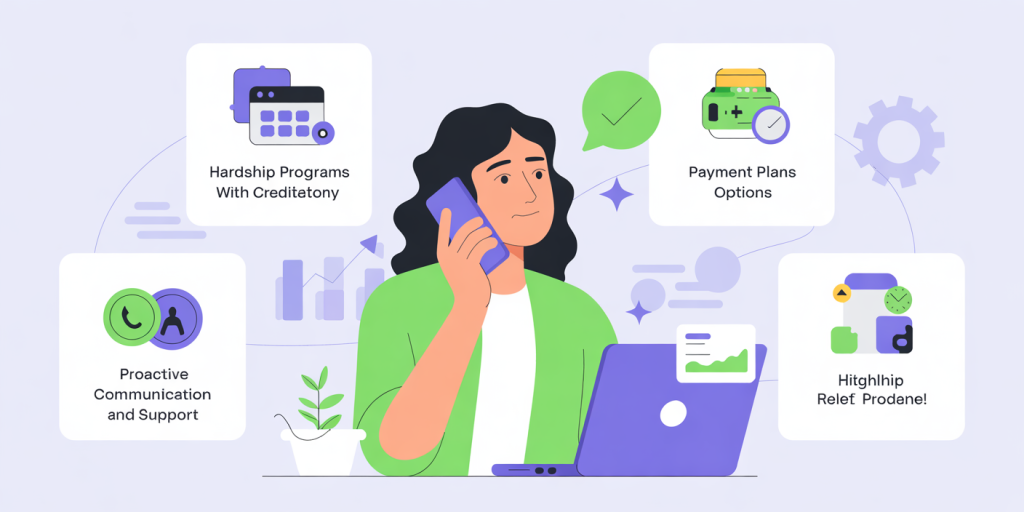What to Do When You Can’t Afford Your Bills
Financial hardship is a reality many individuals and families face, especially during economic downturns, unexpected expenses, or loss of income. Struggling to pay bills can be overwhelming, causing stress and uncertainty about the future. Understanding what steps to take when you find yourself unable to afford your bills is essential for regaining control over your finances. This article explores practical strategies backed by data and real-life examples, providing actionable advice for managing unpaid bills and avoiding prolonged financial damage.
Understanding the Impact of Unpaid Bills
Failing to pay your bills on time can have a domino effect on various aspects of your financial life. According to a 2023 report from the Consumer Financial Protection Bureau (CFPB), over 40% of Americans have difficulty paying at least one bill monthly, which often leads to late fees, service interruptions, and negative credit impacts. Beyond the financial consequences, missed payments can result in stress, anxiety, and difficulty accessing essential services.
Not all bills carry the same weight or have the same consequences if unpaid. Utility bills, rent or mortgage payments, and medical bills often have more immediate repercussions than smaller or discretionary expenses. For instance, missing rent payments can lead to eviction, while overdue utility bills may cause service disconnections. Prioritizing which bills to pay first based on urgency and consequences is crucial in periods of financial strain.

Prioritizing Bills: Which Payments to Make First
When funds are tight, knowing which bills to pay and which can be delayed helps prevent severe negative outcomes. Essential payments typically include housing costs (rent or mortgage), utilities (electricity, water, gas), food, and transportation. These ensure you have a roof over your head, access to utilities, and the ability to commute for work or accessing services.
Medical bills, while urgent, can often be negotiated or deferred, while credit card payments and personal loans, though important to maintain credit health, might be temporarily adjusted through lender communication. For example, during the COVID-19 pandemic, many lenders and service providers introduced relief programs offering forbearance or modified payment plans. A comparative table below illustrates typical bill priorities and possible actions:
| Bill Type | Importance Level | Immediate Consequence of Non-Payment | Potential Remedies |
|---|---|---|---|
| Rent/Mortgage | High | Eviction or foreclosure | Payment plans, emergency aid |
| Utilities | High | Service disconnection | Deferred payment plans |
| Food | High | Hunger, health issues | Food assistance programs |
| Medical Bills | Medium | Collection, credit impact | Negotiation, payment plans |
| Credit Cards | Medium | Credit score damage, fees | Hardship programs, minimum pay |
| Personal Loans | Medium | Default, repossession | Refinancing, hardship plans |
| Discretionary Bills | Low | Service cancellation | Suspension, cancellation |
By addressing critical bills first, you reduce immediate risks and buy time for managing other debts.
Negotiating with Creditors and Service Providers
One of the most effective ways to handle unaffordable bills is to communicate proactively with creditors and service providers. Many organizations have hardship programs in place designed to temporarily ease payment requirements. The National Foundation for Credit Counseling (NFCC) reports that approximately 70% of consumers who contact creditors during financial hardship find assistance options, such as reduced payments or deferred schedules.

For example, utility companies often allow customers to set up payment arrangements or access emergency grant funds. Credit card issuers may offer hardship plans freezing interest or waiving fees for several months. Medical providers frequently consent to extended payment plans or reduced bills, especially if you can demonstrate income loss or hardship.
Real case: Sarah, a single mother in Ohio, lost her job in 2022 and was unable to pay electricity and credit card bills. By calling both companies early, she negotiated a partial payment plan and temporary interest relief, preventing service cancellation and credit score damage. Her proactive approach illustrates the importance of early creditor engagement.
Leveraging Assistance Programs and Financial Resources
Numerous assistance programs at federal, state, and local levels aim to support individuals facing bill payment difficulties. In 2023, the U.S. government allocated over $10 billion in assistance programs related to housing, utilities, and food aid. The Low Income Home Energy Assistance Program (LIHEAP) helps households cover energy costs, while local food banks and SNAP provide nutritional support.

Emergency rental assistance programs also proved vital during the pandemic, helping millions avoid eviction. According to the Department of Housing and Urban Development (HUD), over 2.1 million households received emergency rental aid in 2023 alone. Identifying and accessing these programs requires awareness and sometimes application through social service agencies or nonprofits.
Beyond government help, credit counseling organizations provide budgeting advice, debt management, and credit repair services. These nonprofit agencies, such as those accredited by NFCC, can offer personalized guidance and negotiation support, often free or at low cost.
Budgeting and Expense Management During Difficult Times
Adjusting your budget is a fundamental step to gaining financial stability when you cannot afford your bills. Begin by tracking all income sources and expenses meticulously. Many individuals underestimate the power of a clear budget to identify areas where expenses can be reduced or eliminated entirely.
For example, discretionary spending such as subscriptions, dining out, and entertainment can often be paused or lessened. Switching to lower-cost service providers for phone or internet, shopping sales, or buying in bulk for groceries can also produce savings. Building a zero-based budget, where every dollar is assigned a purpose, can provide clarity and control.
Real-world example: Mark and Anna, a couple from Texas, faced reduced income due to a business slowdown in 2023. They began using a budgeting app, consolidated loans to reduce monthly payments, and cut non-essential spending. Over six months, they managed to cover their bills and rebuild an emergency fund.
Seeking Professional Help and Debt Management Solutions
If unaffordable bills accumulate rapidly despite your efforts, professional help from certified debt counselors or financial advisors can be invaluable. Debt management programs (DMPs) offered by nonprofit agencies consolidate payments to creditors, often with negotiated lower interest or fees, allowing easier repayment.
In more severe cases, credit counseling professionals might recommend debt settlement or, as a last resort, bankruptcy. According to the American Bankruptcy Institute, bankruptcy filings increased by 7% from 2022 to 2023, signaling a rise in individuals overwhelmed by unpaid bills. However, bankruptcy should be considered only after exploring all alternatives due to its long-term impact on credit and financial records.
During consultations, professionals can also help review eligibility for government benefits, subsidies, or community resources to supplement income or reduce expenses.
Planning for the Future: Building Financial Resilience
Recovering from bill payment difficulties requires not just managing the current crisis but also planning to prevent similar challenges. Building an emergency fund is often recommended; financial experts advise saving three to six months’ worth of living expenses. Though challenging, even small and consistent contributions can grow over time.
Financial literacy education is another critical component. Understanding budgeting principles, credit management, and prudent borrowing can improve decision-making and reduce vulnerability to future shocks. Many employers, community centers, and nonprofit organizations now offer workshops or online resources in personal finance education.
Emerging technologies and financial apps also provide tools for automating savings, tracking spending, and optimizing budgets. For example, apps like Digit or YNAB (You Need A Budget) help users develop disciplined financial habits, minimizing the risk of unpaid bills down the road.
Finally, diversifying income streams—whether through part-time jobs, freelancing, or passive income avenues—provides additional security. A U.S. Bureau of Labor Statistics survey showed that 15% of workers supplement their income through secondary jobs, a trend associated with increased financial stability.
Embracing Technology and Policy Changes for a Secure Financial Future
Looking ahead, advancements in technology and evolving policy frameworks present promising opportunities to assist people struggling with bills. Fintech innovations, such as AI-driven budgeting tools and real-time financial coaching, are becoming more accessible to lower-income households. These technologies can offer early alerts on spending, suggest tailored saving strategies, and connect users to aid programs instantly.
Additionally, evolving legislative measures continuously aim to protect consumers from predatory lending and provide relief during economic crises. For instance, proposed federal laws seek to strengthen consumer protections regarding medical debt and utility shutoffs, which historically contribute to financial distress.
Community-based approaches, leveraging peer support and shared resources, are also gaining traction. Cooperative models for shared housing, group purchasing, or communal childcare reduce individual expenses and build social safety nets.
By combining technological advances, informed policy, and community efforts, the outlook for individuals currently struggling with unpaid bills can improve significantly. Proactive engagement, education, and strategic use of available resources will be key to fostering widespread financial resilience in an increasingly complex economic landscape.
Addressing unaffordable bills requires a multifaceted approach, including assessment, prioritization, negotiation, assistance-seeking, budgeting, professional help, and long-term planning. By understanding the consequences, knowing available resources, and tapping into support systems, individuals can navigate difficult financial times and build a more secure future. Careful management today creates a foundation for stability and financial empowerment tomorrow.
